MXA RACE TEST: THE REAL TEST OF THE 2023 KAWASAKI KX250
 THE GEAR: Jersey: Leatt 4.5 Lite, Pants: Leatt 4.5 Lite, Helmet: Arai VX Pro-4, Goggles: Leatt Velocity 6.5, Boots: Leatt 5.5 Flexlock.
THE GEAR: Jersey: Leatt 4.5 Lite, Pants: Leatt 4.5 Lite, Helmet: Arai VX Pro-4, Goggles: Leatt Velocity 6.5, Boots: Leatt 5.5 Flexlock.
Q: FIRST AND FOREMOST, IS THE 2023 KAWASAKI KX250 BETTER THAN THE 2022 MODEL?
A: Yes, it is! Although Kawasaki ignored most of the perennial issues that riders have complained about for the past couple years, the bike did get stronger in the midrange and top end. The KX250 engine was an all-new, high-rpm steed when it gained the short-stroke, big-bore engine in 2020. Then, in 2021, the engine gained an electric start, hydraulic clutch, updated crank, 3mm-longer connecting rod and stiffer valve springs. The 2021 engine was also installed into the KX450 frame. Kawasaki held back on the updates in 2022 and came out swinging again with a list of changes for the 2023 model.
Q: WHAT’S NEW ON THE 2023 KAWASAKI KX250?
A: The 2023 KX250 doesn’t look all that different on the outside, but underneath the hood, Kawasaki made a lot of changes. All of Kawasaki’s R&D time and money went into getting more power out of the KX250 engine, while the chassis and plastic stayed the same. Along with the changes to the engine, the suspension settings were made stiffer and the foot pegs were made lighter and wider. The Dunlop MX3S tires were changed to MX33s, and the rear tire went from a 100 width to 110.
Q: WHAT’S NEW ABOUT THE 2023 KAWASAKI KX250 POWER PLANT?
A: Here’s a list of changes.
(1) The intake valves have a 1.5mm narrower angle and increased clearance at the valve seats to deliver better cylinder filling efficiency. Plus, the valves have been reduced in diameter by 1mm to accommodate the tighter valve pitch.
(2) The 14.1:1 bridged-box piston features a revised crown to match the valve size and angle changes.
(3) Inside the transmission, first gear has been lengthened to make it easier to use, and second gear was fine-tuned to offer a smooth transition from second to third.
(4) The clutch push-rod material has been changed from all steel to an aluminum shaft with a wear-resistant steel cap to aid clutch pull.
(5) To improve durability, the crush height was increased on the connecting rod’s big-end bearing.
(6) The head pipe was lengthened 100mm to enhance low-to-mid throttle response.
(7) The flywheel’s moment of inertia was increased with a 1.4-ounce-heavier magneto rotor.
(8) The downdraft-style intake boot is now straighter, and the upstream injector has been repositioned from above to below the intake tract to further increase cylinder filling efficiency.
(9) Advanced ignition timing was developed to complement the engine updates.
 The 2023 Kawasaki KX250 updates aren’t visible on the outside, but under the hood, it has a hefty list of updates.
The 2023 Kawasaki KX250 updates aren’t visible on the outside, but under the hood, it has a hefty list of updates.
Q: HOW DOES THE 2023 KAWASAKI KX250 RUN ON THE TRACK?
A: The 2023 Kawasaki KX250 doesn’t feel like an all-new engine. It’s similar to the 2022 model, but it’s not the same. The long list of changes to the KX250 engine resulted in stronger midrange and top-end power, but those gains also came with a loss. The initial power at the first snap of the throttle was detuned. Ever since the KX250 gained its new big-bore/short-stroke engine in 2020, this bike has been a 14,500-rpm screamer but has always lacked sufficient low-end grunt. After riding the ’22 and ’23 models back to back, it was clear to us that Kawasaki sacrificed some low-end snap for extra juice in the mid-and-up range. This change made for slightly less friendly power characteristics on corner exit. If we made a mistake in a corner, it was harder to recover.
On the other hand, the extra power after the initial response was noticeably stronger, making it easier to clear jumps and pull away from the competition down straights. In back-to-back tests against last year’s KX250, test riders noted that the power benefits of the 2023 model were similar to adding an aftermarket exhaust system (save for the bottom-end grunt) to the ’22 model.
Don’t get us wrong; the KX250 engine is a high-revving, high-horsepower screamer, but you have to be skilled to find that power. We’ve said this before, and we have to say it again, “If you have 125 two-stroke experience, you’re off to a good start on the KX250.”
Q: HOW IS THE 2023 KAWASAKI KX250 GEARING?
A: The stock KX250 comes with a 13/50 sprocket ratio and three different couplers to adjust the ECU map settings. To find the KX250 power, you have to wring out the KX250 for all it’s worth. But riding high in the rpm range isn’t beneficial for the handling of the bike. The MXA test riders wanted more pick-up on the corner exit and a bigger window of usable power. Changing to a 51-tooth rear sprocket and the more aggressive white ECU coupler gave the KX250 more snap off the bottom and made it easier for the rider to manage the power. These changes were simple but effective.
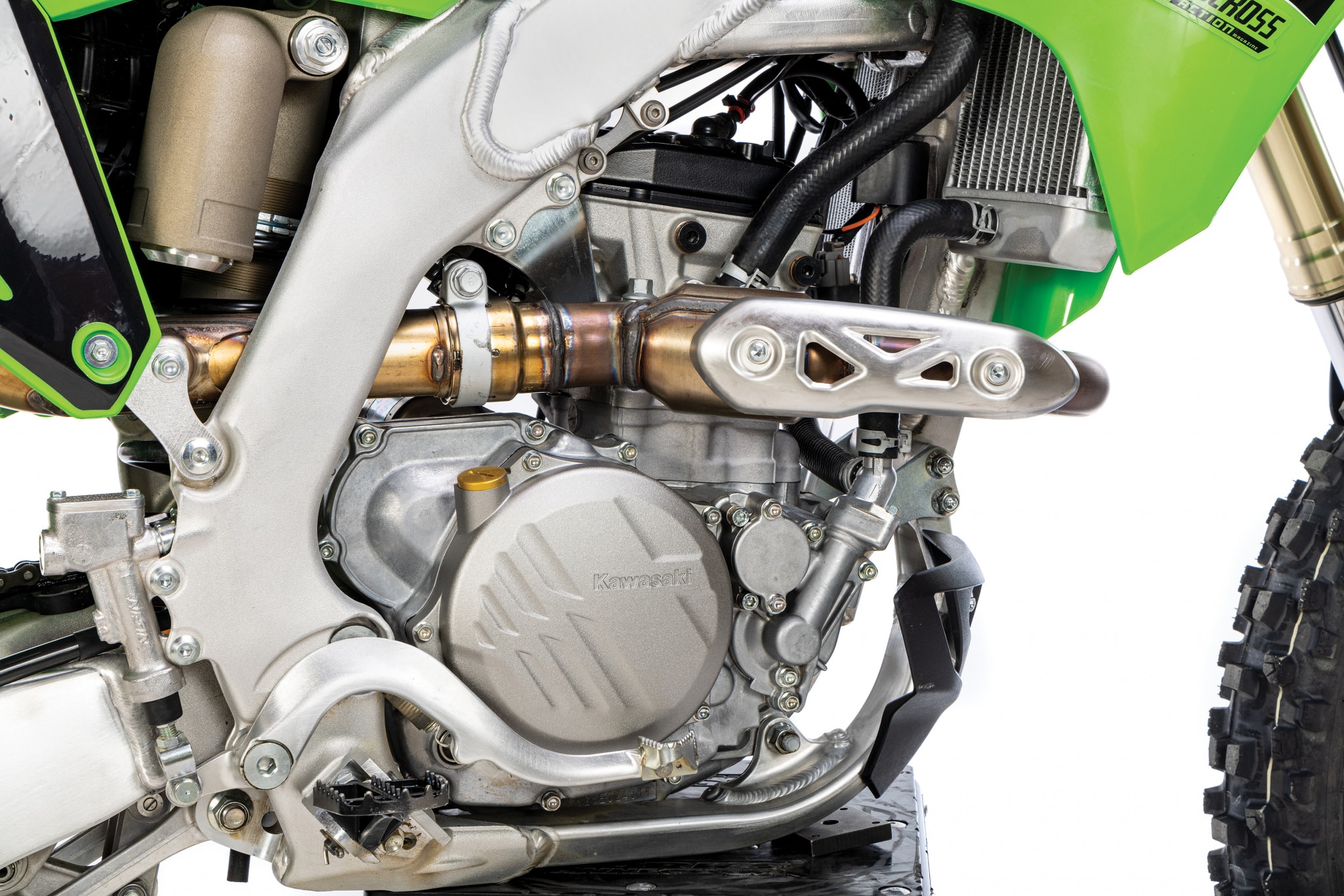 The 2023 KX250 is another high-revving 14,000-rpm engine machine. It makes 44.66 horsepower, which is just a tick below the Husqvarna FC250’s 44.76 and the KTM 250SXF’s 45.22.
The 2023 KX250 is another high-revving 14,000-rpm engine machine. It makes 44.66 horsepower, which is just a tick below the Husqvarna FC250’s 44.76 and the KTM 250SXF’s 45.22.
Q: HOW IS THE 2023 KAWASAKI KX250 FRAME?
A: Ever since Kawasaki put the KX250 engine in the 2021 KX450 frame, we’ve struggled with front-end traction. The KX450 handles great with this same aluminum frame. In fact, it’s one of the most comfortable 450 frames available once you stiffen up the soft Showa forks and balance it out. This is because the larger KX450 engine fills out the frame, but with the smaller 250 engine, there is a very large gap between the frame’s front down rails and smaller engine. This wouldn’t be all that bad if Kawasaki adapted its suspension to this setup or repositioned its engine, but that didn’t happen.
The fact that the 250 and 450 share the same frame isn’t necessarily a problem, but the R&D department has to spend time balancing out the weight distribution and suspension settings. Kawasaki’s engineers didn’t do their due diligence. For example, in 2023, KTM actually went to the expense of casting new engine cases on the 250SXF and 450SXF so that the 450 engine cases were identical in size to the 250 cases.
Q: HOW IS THE 2023 KX250’S KAYABA SUSPENSION?
A: In a not-so-unusual arrangement, Kawasaki specs Kayaba suspension on the KX250 and Showa suspension on the KX450. Paradoxically, the KX450 forks are ultra-soft, and the 250 forks are ultra-stiff.
That’s right, the new KX250 suspension has an incredible amount of holdup. Both the KX250 forks and shock have stiffer valving, and this was immediately noticeable on the track. Test riders could feel that the overall ride height of the KX250 was taller because of the stiffer suspension. We set the sag at Kawasaki’s recommended 102mm and started with the forks in the stock position (5mm above the triple clamps).
In stock form, these forks are too stiff for the average 250-size rider. MXA test riders come in all shapes, sizes and skill levels, and they all agreed that the forks were too stiff. The initial action at the top of the forks worked fine, but the valving ramped up very quickly in the mid-stroke, which created a harsh feel in the bumps. The stiff forks also made it harder to initiate turns, because they positioned the front end higher and didn’t allow the forks to compress as much under braking. It’s nearly impossible, even for our heaviest or fastest riders, to get the forks to have full travel.
In search of front-end comfort and balance, we first tried going out on the compression clickers, but no setting helped. Next, we swapped the stock 4.9 N/mm fork springs for lighter 4.8 N/nm springs. The difference was barely noticeable, and the front end still needed help. Finally, we drained 20cc of oil out of each fork leg…and then 30cc. The Kayaba forks come stock with 290cc of fork oil and call for a minimum of 260cc and a max of 360cc. Even with the oil level at 260cc, they were still too stiff.
The forks weren’t as bad in softer dirt conditions when we had good traction. The heavier dirt helped with fork compression, but once the traction went away, we had a harder time getting into corners. As was the case last year, our test riders were able to make it work by sitting farther forward and braking harder on corner entrance, but our Novice and Vet test riders had a harder time.
We left the Kayaba shock fairly stock because any changes only made the handling worse. In the end, going out on high-speed compression just 1/8 of a turn gave us the most comfort in stock form, but true KX250 nirvana will only be found after sending this suspension off to get it re-valved.
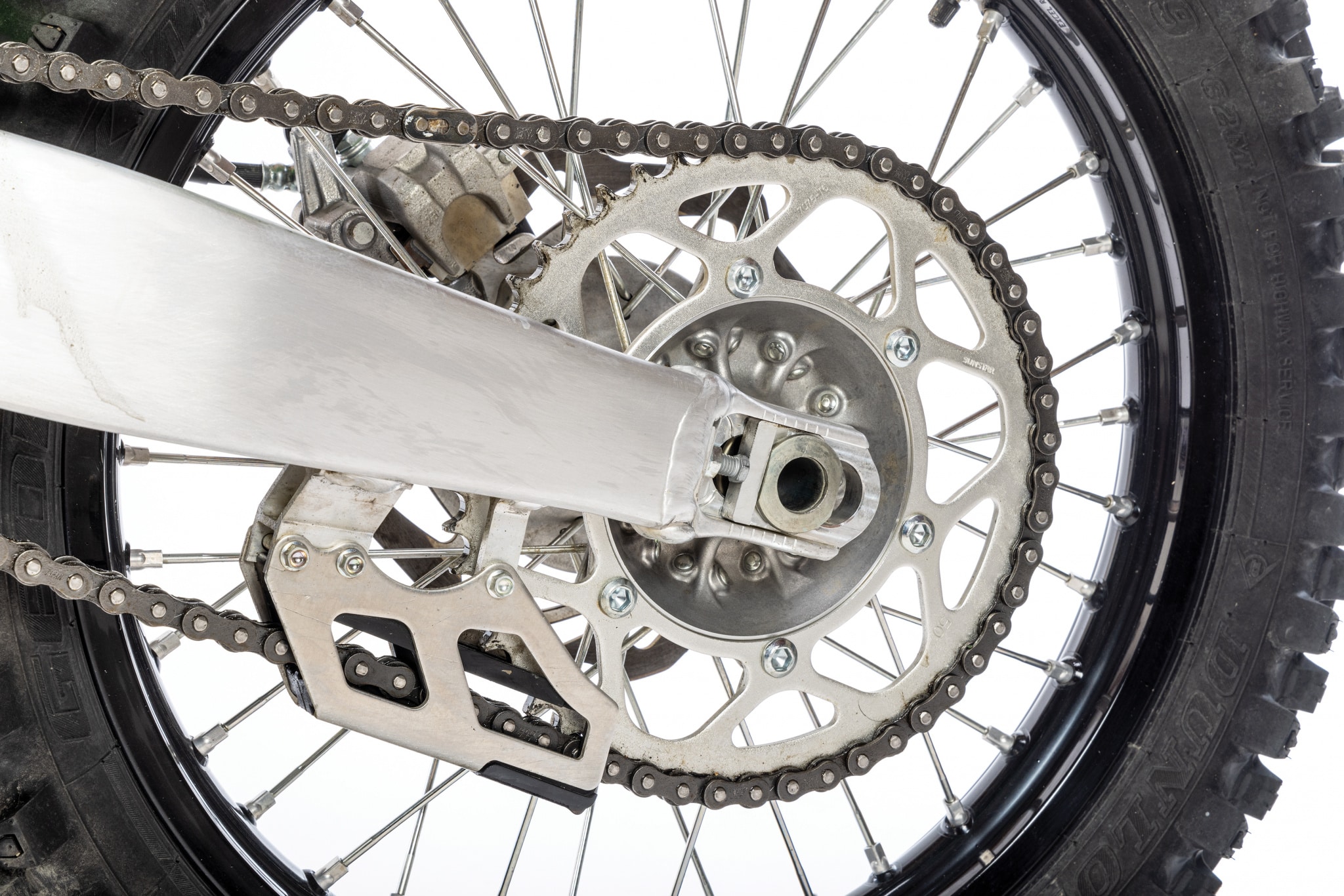 A switch to a 51-tooth rear sprocket and the more aggressive white ECU coupler gave the 2023 KX250 more snap off the bottom.
A switch to a 51-tooth rear sprocket and the more aggressive white ECU coupler gave the 2023 KX250 more snap off the bottom.
Q: IS THERE ANY WAY TO IMPROVE THE KX250’S FRONT END?
A: In true MacGyver fashion, one of MXA’s veteran test riders, Randel Fout (weighing 155 pounds), came up with the idea of adding weight to the front end of the KX250. He originally had the idea back in 2021 when the KX250 first came in the 450 frame; however, he wasn’t desperate enough to try it until Kawasaki made the forks even stiffer for 2023. The idea germinated from his jet ski racing days when he placed weights in the front of the jet ski’s nose to stop it from “porpoising” under hard acceleration. If it helped in the water, could it help in the dirt?
Randel raced the stock KX250 the first weekend of testing, and he struggled with the front end. Then, after a week of testing with softer fork springs and less fork oil, he raced it again. Moto one went better for him, but the same understeer was present. For moto two, Randel mounted two 2.5-pound weights to the front frame rails with 100-pound-rated commercial strapping. As he suspected, Randel was able to enter the turns with more confidence with the improved front wheel traction. Of course, this isn’t an acceptable long-term fix for a brand-new 2023 dirt bike, but it at least confirmed to us that the KX250 chassis could use some help. We never had these issues with the 2020 KX250 when it had its own frame.
 The 48mm Kayaba forks are ultra-stiff on the 2023 KX250.
The 48mm Kayaba forks are ultra-stiff on the 2023 KX250.
Q: WHAT DID WE HATE?
A: The hate list.
(1) Levers. The clutch and brake levers have completely different shapes and thicknesses. Aftermarket lever companies make a killing selling Kawasaki levers.
(2) Plastics. Make sure to install thick vinyl graphics on your fork guard before you go racing. Kawasaki fork guards are brittle. MXA has broken countless stock fork guards. They shatter at the first sign of roost.
(3) Bolts. Kawasaki bolts strip out easier than any other brand.
 This T-plate will fall out every time you remove the seat bolt. Bolt Hardware makes one that will stay in place.
This T-plate will fall out every time you remove the seat bolt. Bolt Hardware makes one that will stay in place.
(4) Airbox cover. You have to remove 8mm and 10mm bolts to get to the air filter. Be forewarned: when you remove the 10mm seat bolt, the T-plate that it threads into will fall on the ground. Luckily, Bolt Hardware makes an aftermarket T-plate that won’t fall out. Additionally, the 8mm bolt is prone to stripping out when you put the airbox cover back on.
(5) Frame. We love this frame on the KX450 and can’t get comfortable with it on the KX250.
(6) Suspension. Kawasaki put race-spec settings in the 2023 KX250 forks. They would work well at an AMA National where there is ultimate traction and big bumps, but they are overkill for the average rider.
(7) Radiator cap. This bike comes stock with an untrustworthy 1.1 kg/mm2 radiator cap. We switched it to a 1.8 kg/mm2 cap.
(8) Chain roller. Kawasaki chain rollers come apart in short order. Protect your chain with TM Designworks parts.
(9) Decibels. Not only is this bike loud, it sounds raspy. There is nothing melodic about the KX250’s exhaust note.
Q: WHAT DID WE LIKE?
A: The like list.
(1) Power. This high-horsepower, high-revving engine got even faster for 2023.
(2) Footpegs. The rider triangle is comfortable from the git-go, and Kawasaki took the extra step to offer two different adjustable footpeg heights.
(3) Brakes. The Nissin brakes work well, and the rear brake, unlike the 250mm rear rotor on the KX450, is a less grabby 240mm.
(4) Maps. The three different map settings offer distinctly different powerbands, but the plug-in couplers are decidedly old-fashioned.
(5) Tires. Kawasaki joined the movement to spec 110/90-19 rear tires, but unfortunately they mounted it on the small 1.85 rim size.
(6) Price. Kawasaki has continued to invest in its KX250. With the inflation we’ve seen around the world, a $100 price increase is understandable.
Q: WHAT DID WE REALLY THINK?
A: Over the past few years, Kawasaki has been going round-and-round with its KX250 engine in search of more power. We appreciate their efforts, but now it is time to focus on the handling. When a bike understeers on the corner entrance, it’s hard to ride it properly and even harder to get full use out of the powerband. If you’re constantly making corrections, you won’t be able to carry the momentum needed to let this engine shine. The 2023 Kawasaki KX250 engine is certainly stronger than the 2022 model, but the chassis and the suspension hold it back.
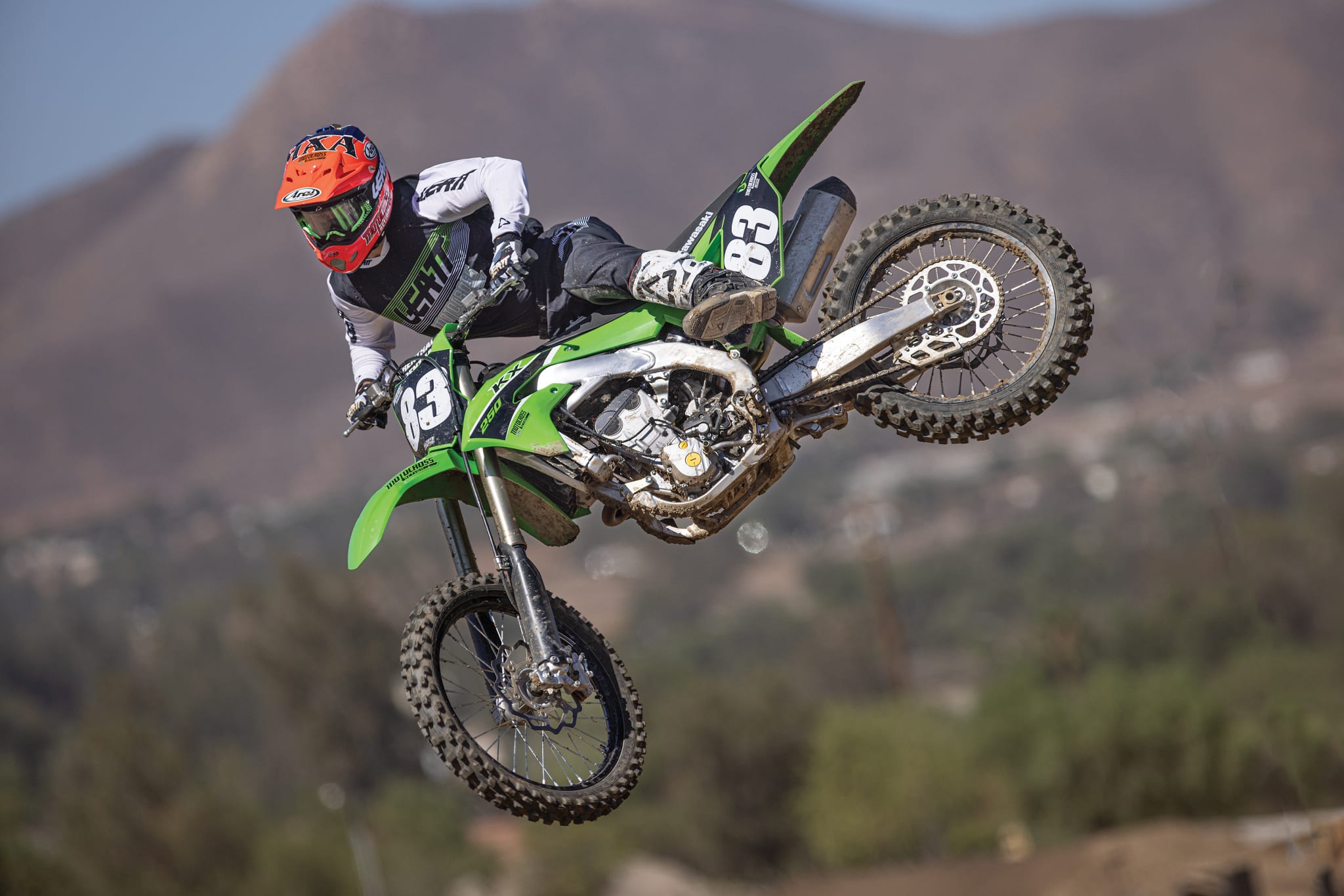 The 2023 Kawasaki KX250 jumped up $100 this year. It now retails for $8499.
The 2023 Kawasaki KX250 jumped up $100 this year. It now retails for $8499.
MXA’S 2023 KAWASAKI KX250 SETUP SPECS
This is how we set up our 2023 Kawasaki KX250 for racing. We offer it as a guide to help you find your sweet spot.
KAYABA SPRING FORK SETTINGS
Although they are stiff, you can make small improvements to these forks to help them work better. We always put a zip-tie on one fork leg to monitor how far the forks compress. The sweet spot is 1-1/2 inches from bottoming, but good luck getting within 3 inches of bottoming with these forks. For hardcore racing, these are MXA’s recommended 2023 Kawasaki KX250 fork settings (stock settings are in parentheses):
Spring rate: 4.7 N/mm (4.9 N/mm stock)
Compression: 12 clicks out
Rebound: 12 clicks out
Fork-leg height: 5mm
Notes: If you are a light rider, consider going to much lighter fork springs. If you’re on a budget and want to make the stock settings work, drain 20cc of fork oil out of each leg’s air bleed hole to soften them up. Draining oil is easy; adding oil requires a few extra tools. To drain fork oil, simply remove the air bleed screw on the fork cap, turn the fork upside down, and let the oil drip into a micro measuring cup that monitors at 5cc increments. Your ratio right won’t work for this. The best advice is to send the forks and shock out to your favorite suspension tuner.
KAYABA SHOCK SETTINGS
For hardcore racing, these are MXA’s recommended 2023 Kawasaki KX250 shock settings:
Spring rate: 54 N/mm
Race sag: 100mm (103mm)
Lo-compression: 12 clicks out
Hi-compression: 1-7/8 turns out (1.5 turns out)
Rebound: 13 clicks out (15 clicks)
Notes: Be sure to check your race sag often, and don’t be scared to play with it. Having your sag in the correct position is your best chance of finding perfect balance. Race sag also affects how much weight is on the front end. A lower 105mm of race sag will take weight off the front, making it harder to turn, while 100mm of race sag will make it turn sharper.


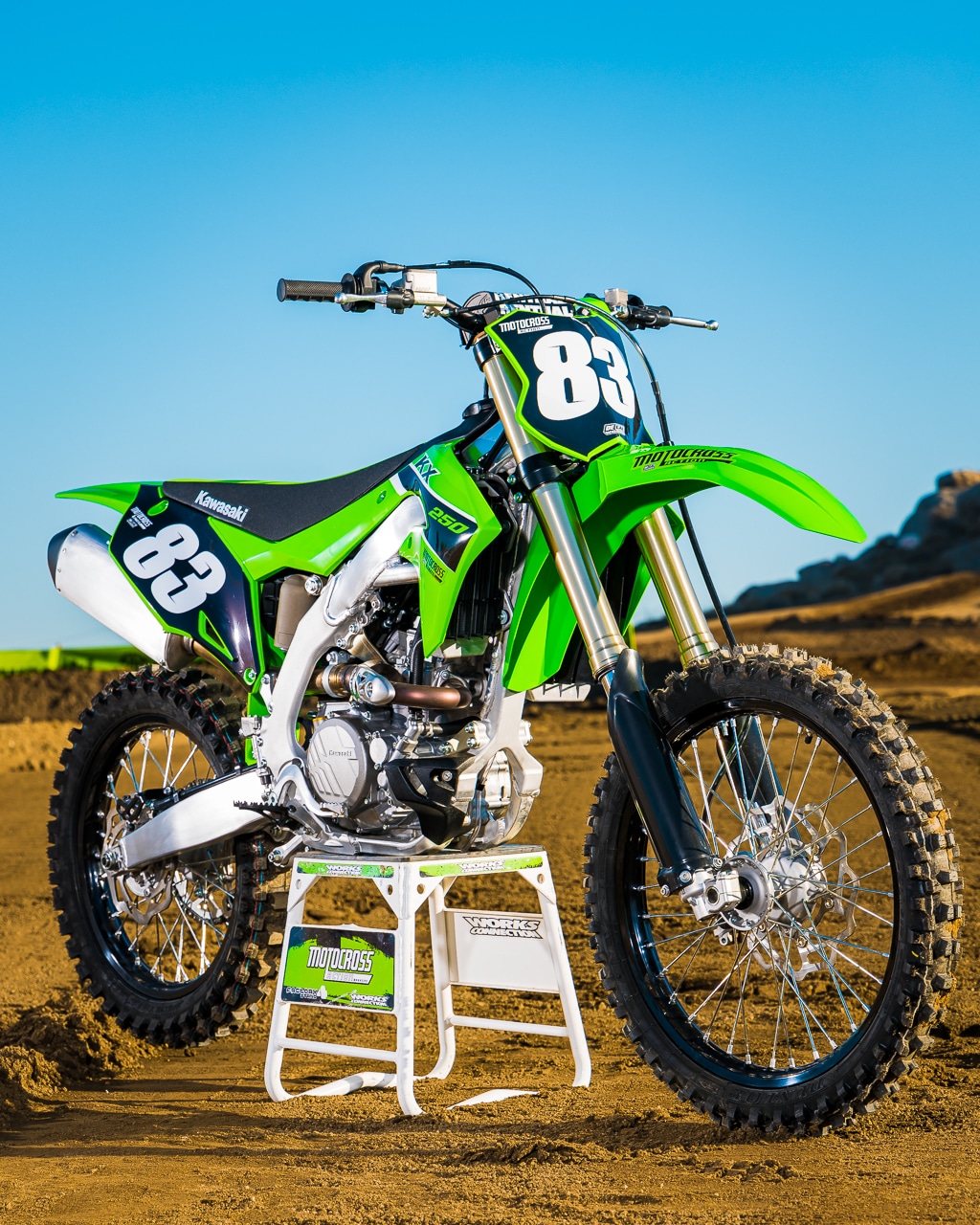
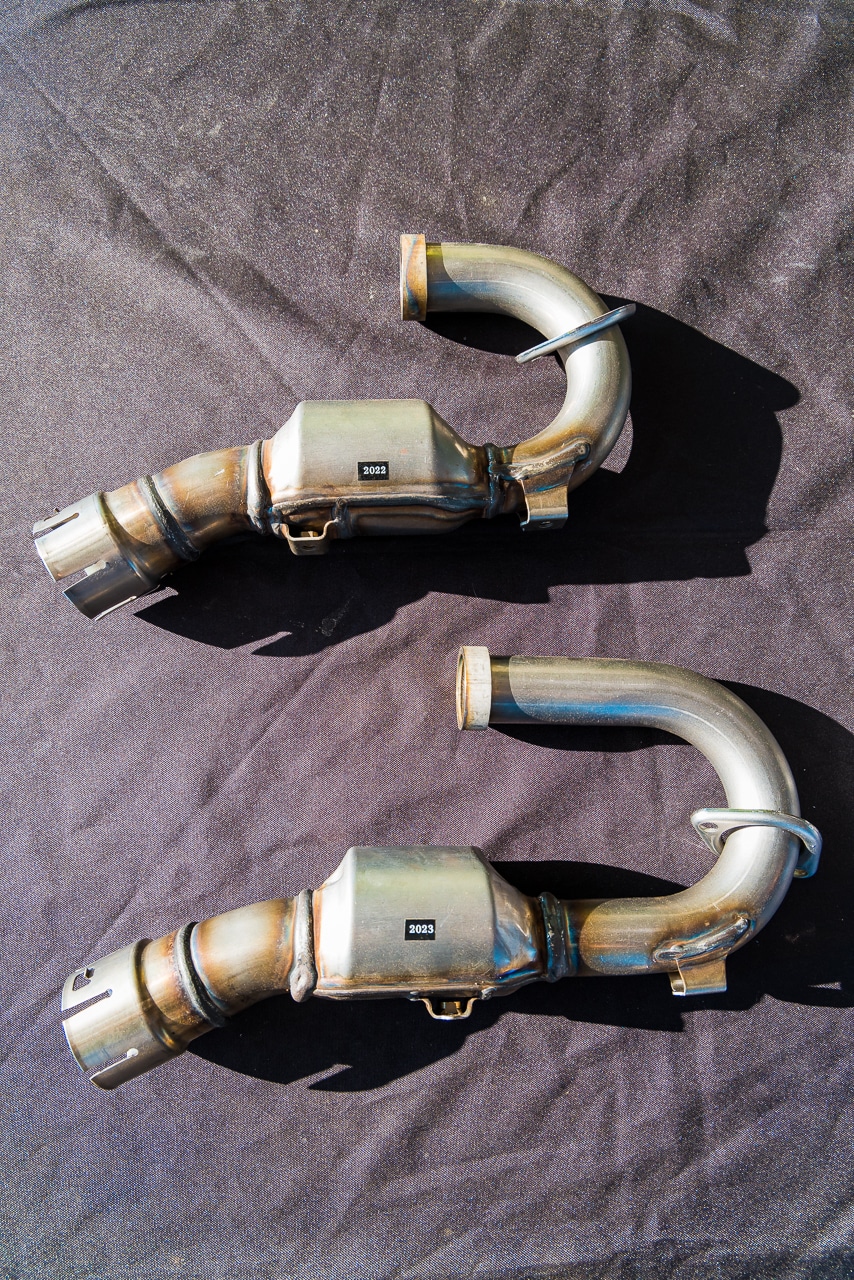





Comments are closed.